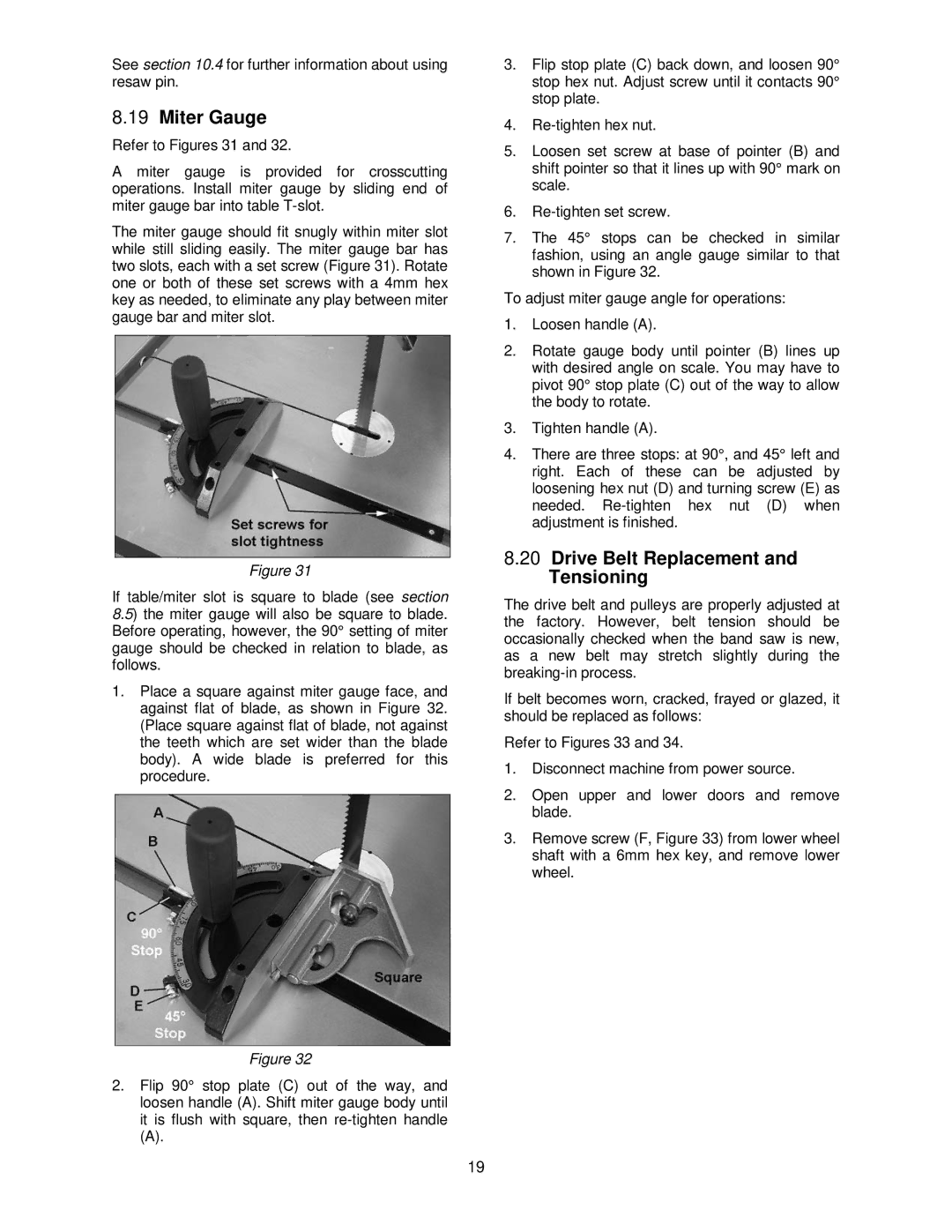
See section 10.4 for further information about using resaw pin.
8.19Miter Gauge
Refer to Figures 31 and 32.
A miter gauge is provided for crosscutting operations. Install miter gauge by sliding end of miter gauge bar into table
The miter gauge should fit snugly within miter slot while still sliding easily. The miter gauge bar has two slots, each with a set screw (Figure 31). Rotate one or both of these set screws with a 4mm hex key as needed, to eliminate any play between miter gauge bar and miter slot.
Figure 31
If table/miter slot is square to blade (see section 8.5) the miter gauge will also be square to blade. Before operating, however, the 90° setting of miter gauge should be checked in relation to blade, as follows.
1.Place a square against miter gauge face, and against flat of blade, as shown in Figure 32. (Place square against flat of blade, not against the teeth which are set wider than the blade body). A wide blade is preferred for this procedure.
Figure 32
2.Flip 90° stop plate (C) out of the way, and loosen handle (A). Shift miter gauge body until it is flush with square, then
(A).
3.Flip stop plate (C) back down, and loosen 90° stop hex nut. Adjust screw until it contacts 90° stop plate.
4.
5.Loosen set screw at base of pointer (B) and shift pointer so that it lines up with 90° mark on scale.
6.
7.The 45° stops can be checked in similar fashion, using an angle gauge similar to that shown in Figure 32.
To adjust miter gauge angle for operations:
1.Loosen handle (A).
2.Rotate gauge body until pointer (B) lines up with desired angle on scale. You may have to pivot 90° stop plate (C) out of the way to allow the body to rotate.
3.Tighten handle (A).
4.There are three stops: at 90°, and 45° left and right. Each of these can be adjusted by loosening hex nut (D) and turning screw (E) as needed.
8.20Drive Belt Replacement and Tensioning
The drive belt and pulleys are properly adjusted at the factory. However, belt tension should be occasionally checked when the band saw is new, as a new belt may stretch slightly during the
If belt becomes worn, cracked, frayed or glazed, it should be replaced as follows:
Refer to Figures 33 and 34.
1.Disconnect machine from power source.
2.Open upper and lower doors and remove blade.
3.Remove screw (F, Figure 33) from lower wheel shaft with a 6mm hex key, and remove lower wheel.
19
